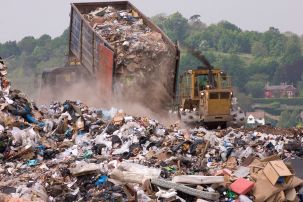Lesson summary
Students are asked to research what happens to the waste that is produced from schools and homes in their local area. They then produce a chart showing the pathway of the different types of waste.
Learning intentions:
Students will...
- understand that waste is everybody’s responsibility
- recognise that different forms of waste are disposed of in different ways.
Lesson guides and printables
Curriculum links
Select your curriculum from the options below.
Lesson details
Curriculum mapping
Australian Curriculum content descriptions:
Year 5 English:
- Plan, rehearse and deliver presentations for defined audiences and purposes incorporating accurate and sequenced content and multimodal elements (ACELY1700).
- Use comprehension strategies to analyse information, integrating and linking ideas from a variety of print and digital sources (ACELY1703).
Year 5 Science:
- Scientific knowledge is used to inform personal and community decisions (ACSHE083).
- Communicate ideas, explanations and processes in a variety of ways, including multi-modal texts (ACSIS093).
Year 6 English:
- Plan, rehearse and deliver presentations, selecting and sequencing appropriate content and multimodal elements for defined audiences and purposes, making appropriate choices for modality and emphasis (ACELY1710).
- Use comprehension strategies to interpret and analyse information and ideas, comparing content from a variety of textual sources including media and digital texts (ACELY1713).
- Plan, draft and publish imaginative, informative and persuasive texts, choosing and experimenting with text structures, language features, images and digital resources appropriate to purpose and audience (ACELY1714).
Year 6 Science:
- Scientific knowledge is used to inform personal and community decisions (ACSHE100).
- Communicate ideas, explanations and processes in a variety of ways, including multi-modal texts (ACSIS110).
Syllabus Outcome: ST3-6PW, ST3-4WS, EN3-1A, EN3-2A, EN3-3A.
Resources required
- Writing materials
- Computer with internet access
Additional info
This is an original Cool.org lesson. Facts and figures in these lessons may have changed since this lesson was published. We always endeavour to update our resources in a timely manner, but if you see an error or issue in our resources please get in touch with us.


Welcome back!
Don't have an account yet?
Log in with:
Create your free Cool.org account.
Many of our resources are free, with an option to upgrade to Cool+ for premium content.
Already have an account?
Sign up with:
By signing up you accept Cool.org's Terms and Conditions(Opens in new tab) and Privacy Policy(Opens in new tab).